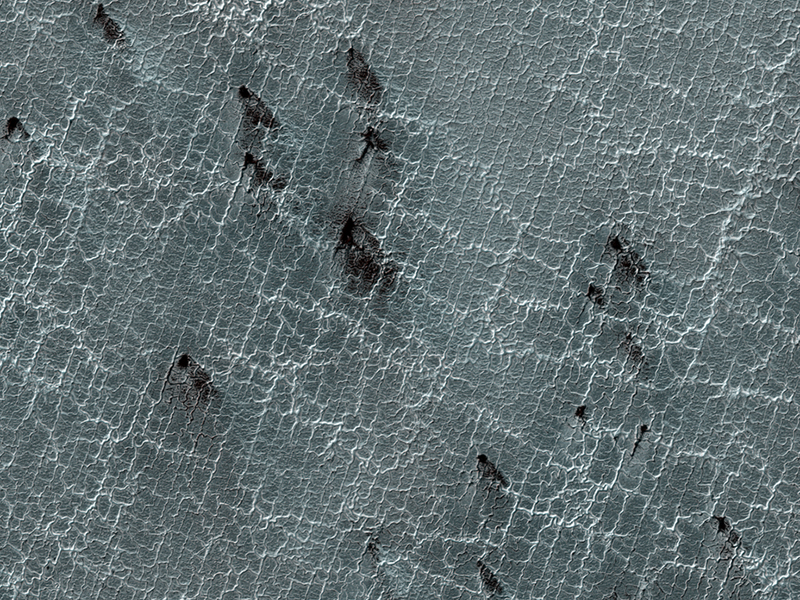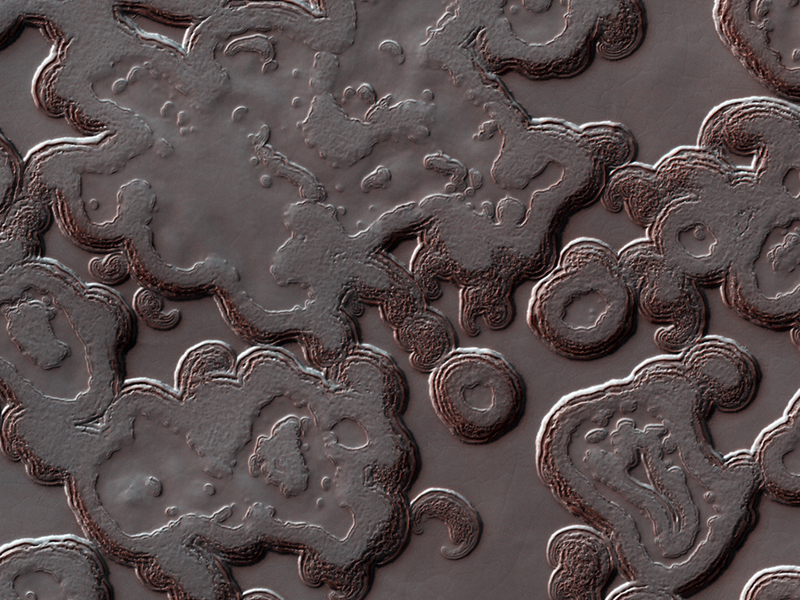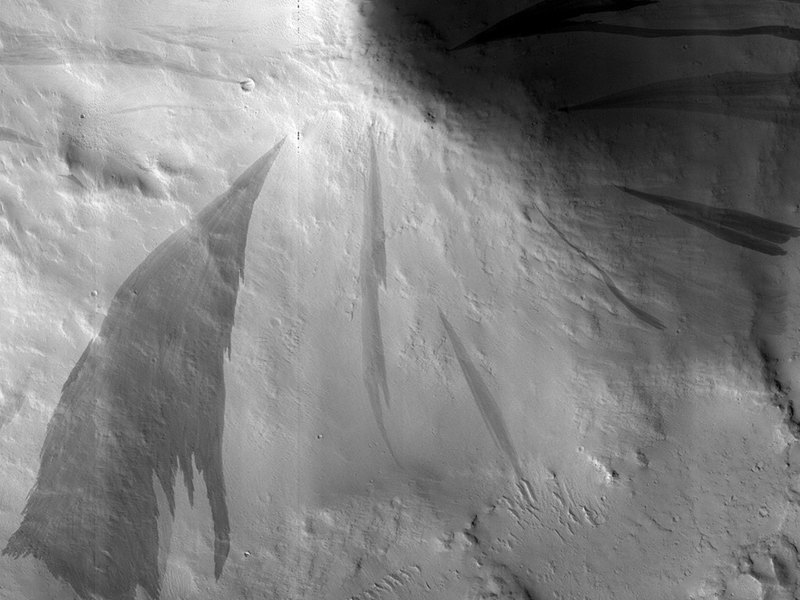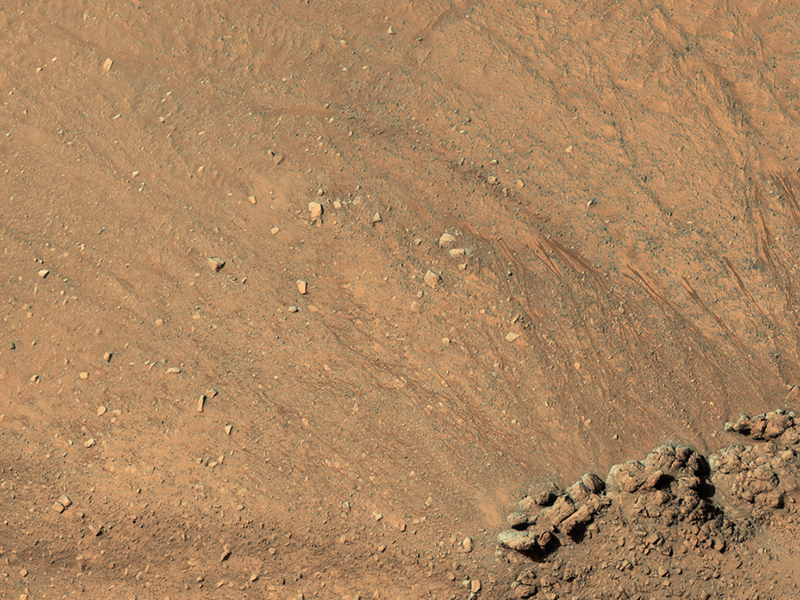M. Ramy El-Maarry wrote:The Enduring Charm of Martian Spiders (ESP_056927_0940)
Araneiform terrain (colloquially: spider-like terrain) is located in the south polar region of Mars and evolves in appearance over the spring and summer. In the season shown here, the thin bright lines on the surface (the spider legs) are troughs and many of these features have dark fan-shaped markings emanating from them.
Our current theory for how these patterns are formed is that during winter a carbon dioxide ice layer develops over the surface. When sun rays strike this surface, this carbon dioxide ice acts in a similar way to our atmosphere: it allows the sun light to penetrate but traps the infrared radiation creating a greenhouse-like effect.
The trapped heat transforms the ice at the bottom of the layer to gas, building up pressure until it bursts through. When that happens, the gas flows out in geyser-like fashion and carries dust with it, which falls back to the surface to form the dark fans.
Colin Dundas wrote:Swiss Cheese on a Red Planet (ESP_056310_0940)
The Martian south polar cap is a layer of carbon dioxide ice, full of pits that make it look like Swiss cheese. The pits form when the Sun heats the ice and makes it sublimate (transform from a solid to a gas). Because it’s at the pole, the Sun never gets very high in the sky, so steep slopes get more heat and sublimate faster, causing pits to form and grow. This is balanced by new carbon dioxide frost that forms on flatter areas.
Compare this image with one we took in 2007. How many differences can you find?
Ross Beyer wrote:Slope Streaking (ESP_057080_1915)
We have been monitoring the slope streaks on this hill for several years. There are definitive changes between this September 2018 image and a previous one in December 2016. Earlier streaks have since faded and new, darker streaks are visible. These streaks are tens of meters wide.
These features are small avalanches of dust and sand from the hillsides. The surface dust is lighter in color, but when it avalanches away, it reveals underlying larger-grained sand particles that are much darker. Over time, the dust slowly rains down from the atmosphere and the streaks fade as they are coated with dust.
Ginny Gulick wrote:The Eastern Slope of Asimov Crater’s Central Pit (ESP_057522_1330)
Asimov is an 84-kilometer diameter crater located in the southern ancient highlands of Mars. It is distinguished from other craters in this region in that it contains both a ring-depression just within the crater rim and a pit near the center.
Gullies have formed along slopes both in the ring-depression and within the central pit. A closeup shows gullies and recurring slope lineae (RSL) along the eastern slope of the pit. These features continue to form seasonally in this region and the HiRISE team monitors this and other sites to look for changes.
Another closeup shows new RSL forming during the summer just after the recent global dust storm. How these features form is still under investigation. Additional changes documented here and at other locations as a result of the dust storm may provide some insight into their formation.
Credit: NASA/JPL-Caltech/University of Arizona
<< Previous HiRISE Update



